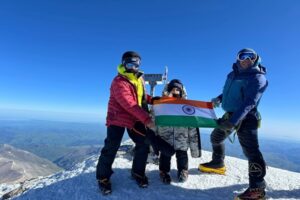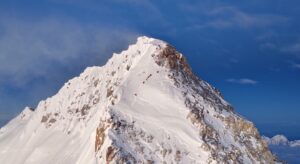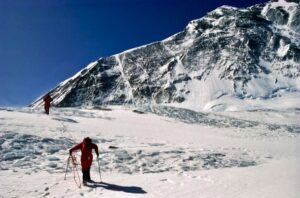International teams will finally return to the North Side of Everest this spring. But don’t expect crowds or novices among the climbers. The China Tibet Mountaineering Association (CMTA) has established strict limitations, in addition to the natural filter of higher prices.
A handful of outfitters have confirmed climbs on Everest’s north side with ExplorersWeb. Others might join in the next few weeks. It is a change from the disappointment of 2023 when international companies eventually canceled their plans to climb to the highest point on Earth from Tibet. One U.S. team from National Geographic kept struggling to get last-minute permission to climb the mountain in the post-monsoon, but they didn’t get very far either.
The measures established by the Chinese authorities are aimed at increasing safety, but alpinism will suffer, because no independent climbers or no-O2 attempts will be allowed.
Only guided, O2-supported visitors
Furtenbach Adventures of Austria will have a Flash and a Classic expedition team on the north side, personally led by company head Lukas Furtenbach. Furtenbach told ExplorersWeb that the previous maximum number of permits, 200, will be further reduced. China has not yet released the final number.

The North Col of Everest. Photo: Furtenbach Adventures
Alpenglow Expeditions of the U.S. is also launching a team. As they previously explained to ExplorersWeb, it only offers Everest expeditions on the North Side. It considers this Tibetan side much safer than the south side with its hazardous Khumbu Icefall.
In previous articles, we have discussed the pros and cons of both the north and south sides of the mountain.
Nepalis too
Two Nepali companies, Mingma G’s Imagine Nepal and Climbalaya Treks and Expeditions, have also confirmed North Side teams.
“We have a big team on the South Side with no seats left, and then we will launch a small team on Everest’s North Side,” Mingma G told ExplorersWeb.
He notes that the CMTA will only give permits to those who have previously climbed at least a 7,000’er. No first-timers. “Which is a good thing,” said Mingma G.
Climbalaya has long-standing good relations with the CTMA. They already ran climbs to both Cho Oyu and Shishapangma last year, in both spring and fall.

The North Side of Everest from Rongbuk. Photo: Shutterstock
The CMTA’s stricter measures are an attempt to avoid tragic episodes such as the one that occurred last fall on Shishapangma. Here, two clients competing to become the first U.S. woman to complete the 14 8,000’ers died in two consecutive avalanches, along with their sherpa guides. After the accidents, the CTMA closed the mountain for the rest of the season. However, all four used supplementary O2, and the clients relied on their guides, so it is unclear how the new measures are a response to that specific disaster.
Pricey trip
Climbing Everest from its north side is remarkably more expensive than doing so from the south side. Just the climbing royalty fee is $15,800, Furtenbach explained, although that figure includes transportation and accommodation in Tibet during the approach.
Nepal itself plans a large increase in permit fees, from the current $11,000 per person to $15,000, bringing it almost up to par with Tibet. But that increase only takes effect in 2025.






